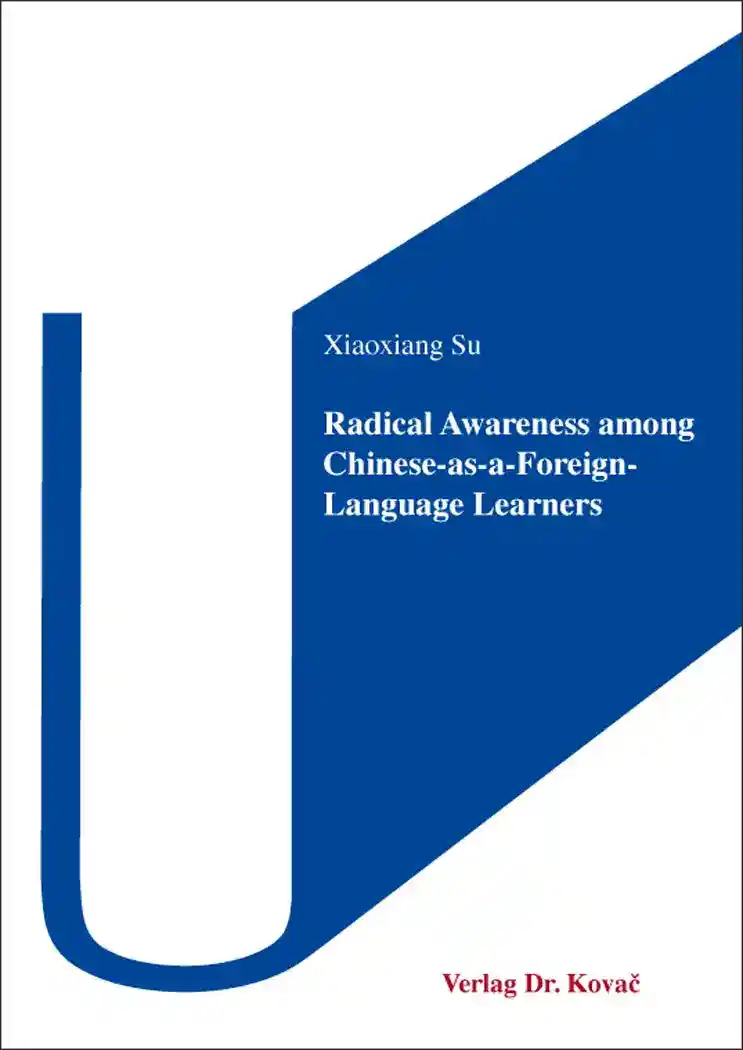Xiaoxiang SuRadical Awareness among Chinese-as-a-Foreign-Language Learners
LINGUA – Fremdsprachenunterricht in Forschung und Praxis, Band 55
Hamburg 2020, 118 Seiten
ISBN 978-3-339-11740-3 (Print)
ISBN 978-3-339-11741-0 (eBook)
Zum Inhalt
This study examined radical awareness among college students who learned Chinese as a foreign language (CFL).
Radicals are subcomponents of characters. They follow positional constraints and they have meaning-cueing and pronunciation-cueing functions. Radical awareness, the knowledge about the positional and functional regularities of radicals has been found closely related to Chinese word reading and word writing among developing readers in first language literacy acquisition (Chan & Nunes, 1998; Ho, Ng, & Ng, 2003; Packard et al., 2006). The instruction on improving radical awareness was proved beneficial in character recognition, semantic categorization and character writing (Ho, Wong & Chan, 1999; Packard et al, 2006). Despite the wide interests in radical awareness in L1 literacy acquisition, relevant research in second language/foreign language is scant.
Three objectives guided the present study: 1) to determine radical awareness levels among CFL learners who differ in their Chinese proficiency levels; 2) to explore the relation between radical awareness and word recognition among CFL learners and to determine whether this relationship differ between advanced and beginning CFL learners; 3) to explore the shared and unique relations of radical awareness with word recognition in Chinese.
Ninety-seven CFL learners at a US southeastern university participated in the study. They were categorized as either beginning or advanced CFL learners based on a Latent Class analysis. A word recognition test and three tasks were created for the present study. These three tasks included a character legality decision task, a character-meaning matching task, and a character writing task. The character legality decision task was aimed at measuring learners’ implicit positional radical awareness; the character-meaning matching task was aimed at measuring learners’ implicit semantic radical awareness; the character writing task was used to measure the explicit radical awareness (both radical positional awareness and semantic radical awareness). ANOVA and multiple regressions were utilized as statistical analysis methods to answer the three research questions.
The results of the study showed that advanced CFL learners had higher levels of radical awareness than beginning CFL learners. They also yielded significant relations between implicit positional radical awareness, explicit positional radical awareness and explicit functional semantic radical awareness and word recognition among CFL learners and that this significant relationship did not vary between advanced and beginning CFL learners. The third finding from this study was that explicit functional semantic radical awareness was the unique predictor of word recognition among CFL learners.
The present study is unique in several aspects. First, the present study extended the previous studies by exploring the relation between language proficiency and radical awareness among CFL learners. For the few that explored the radical awareness among CFL learners, exposure time was the only factor that has been considered. Second, this study systematically examined explicit and implicit radical awareness for two types of radical awareness (i.e., positional and semantic) to explore the nature of the relation between radical awareness and word recognition comprehensively. Third, this study investigated the shared and unique relations of various radical awareness tasks to word recognition in Chinese.
The present study also has pedagogical implications. It has the potential to inform the Chinese textbook writers and classroom teachers to have a better understanding as to how to teach characters in a more efficient way. For example, the results may inform teachers about the importance of explicitly teaching radicals, and approximately when to introduce the concept of radicals in language study.
